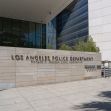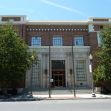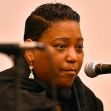Chloe Psalm Jeri Borden, a 23-year-old single mother and activist, went to a courthouse in Fresno, California, in 2019 to film what she considered to be “law enforcement harassment and misconduct.” She took pictures of people entering and leaving the building and its lobby on her cell phone while she was located in what the courthouse had classified as a “designated media area.”
The definition of this term and to whom it applies are the central issue in Borden’s case. When two sheriff’s deputies, Ethan Bare and Jeremy Malicoat, told her to leave the area, she refused. They arrested her for obstruction of justice, claiming she was “willfully obstructing, resisting, and/or delaying a peace officer” when she would not provide the officers with her name or identification, but instead “mouthed off to them” and was generally uncooperative.
She sued the officers for false arrest, and the charges against her eventually were dismissed. Yet she was not satisfied with the dismissal and proceeded to sue the officers for not having probable cause to arrest her. Judge Anthony W. Ishii, Presiding District Judge for the U.S. District Court for the Eastern District of California, granted summary judgment to the sheriff’s deputies. Borden appealed, and a unanimous three-justice panel composed of Consuelo M. Callahan, William A. Fletcher, and Kenneth Kiual Lee from the Ninth Circuit Court of Appeals affirmed Ishii’s decision in an unpublished opinion on October 20.
Borden’s single issue on appeal was the proper interpretation of the Fresno Superior Court’s General Order and Local Rule 1.1.17. This rule, titled “Use of Recording Devices” states, “No one may engage in photographing, recording, broadcasting, or activating any camera, microphone, recorder or broadcasting device while in Court, or in any courthouse, except…outside the Court, if it is: i) in a designated media area, or ii) with prior written permission from the Presiding or supervising judge.” Borden did not have permission from a judge.
She argued that “saying ‘no one may record in the courthouse except from a designated media area’ is the same as saying ‘everyone may record in the courthouse if within a designated media area.’”
Borden therefore believed that the rule was ambiguous because neither the General Order nor Local Rule impose restrictions that apply to members of the general public. Rather, the words “designated media area” do not limit protection to the media, only to people in the designated media area. There is no rule that limits members of the public from entering and taking photos in the specified area. In his opening appeal brief, Borden’s attorney said that his client “was entitled to record the courthouse lobby from the media area” and therefore, “the deputies had no probable cause that she was committing a crime when they arrested her and used force on her.”
Ishii’s opinion disagreed. He cites California Rule of Court 1.150(b (2) to support his ruling. The rule defines the word “media” as “any person or organization engaging in news gathering or reporting” and includes many examples of what is considered media, such as a newspaper, radio or television station or network, magazine… or news-gathering agency. He wrote, “If this definition is read into the phrase “designated media area,” then the phrase refers to an ‘area’ that is ‘designated’ for a “person or organization engaging in news gathering or reporting . . .This suggests that the privileges afforded in the designated media area apply only (emphasis not in original) to members or representatives of the media.”
Borden argued there was no probable cause for the arrest because the cited local rule did not specifically prohibit a person who is not a member of the media from photographing the court’s entrance if they were doing so in a designated media area. The judge disagreed and said that Borden’s presence and photography in the media area provided the deputies with probable cause for her arrest. In addition, he explained that the local ordinance states that its strict rule on the use of recording devices “is for the protection of the public, all parties, and court personnel and to facilitate the fair and orderly resolution of cases.”
Borden faced an additional obstacle as well. Under California law, a law officer is shielded from liability even if their actions “result from “a mistake of law, a mistake of act, or a mistake based on mixed questions or law and fact” unless they violate a “federal or constitutional right” and “the conduct was clearly established at the time.”
Since Borden was not a member of the media, and since it was “undisputed that she repeatedly interrupted and spoke over Defendant Bare while he attempted to investigate and explain to her the relevant rules,” Ishii concluded that the deputies had probable cause to investigate her. The opinion also said that even if the deputies had “misinterpreted parts of the General Order and Local Rule, they were nevertheless entitled to qualified immunity because it “is reasonably arguable that there was probable cause for the arrest.”
In conclusion, the Ninth Circuit opinion ruled that given the language of the court rules and the public’s “strong interest in protecting jurors, witnesses and court personnel from unwanted publicity, the district court’s interpretation of the order and rule is at least reasonable, if not compelling. Accordingly, we agree with the district court that the deputies were entitled to qualified immunity because they reasonably believed that the local rules prohibited Ms. Borden’s photographing the court’s entrance and thus had probable cause to detain her.”






